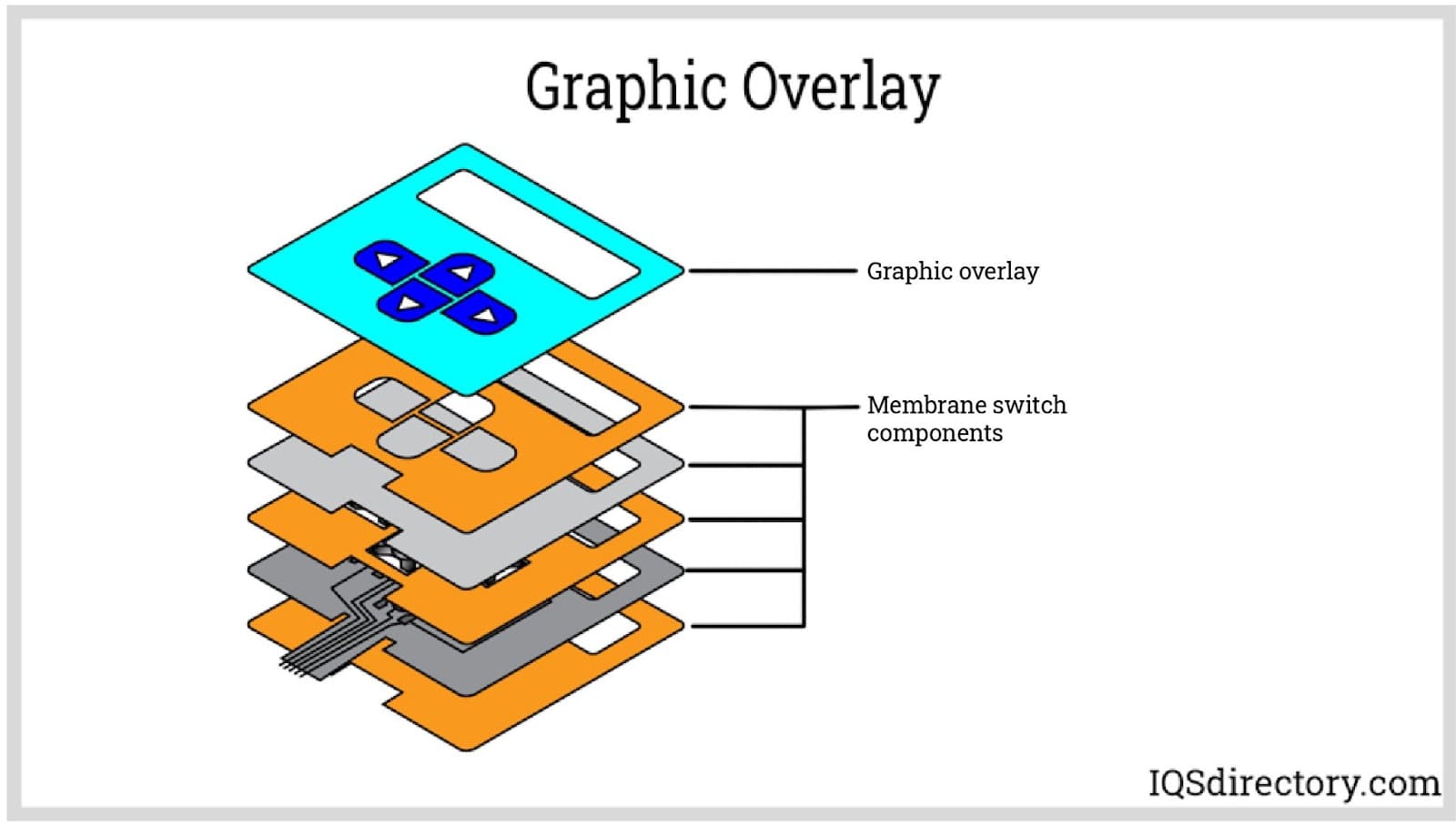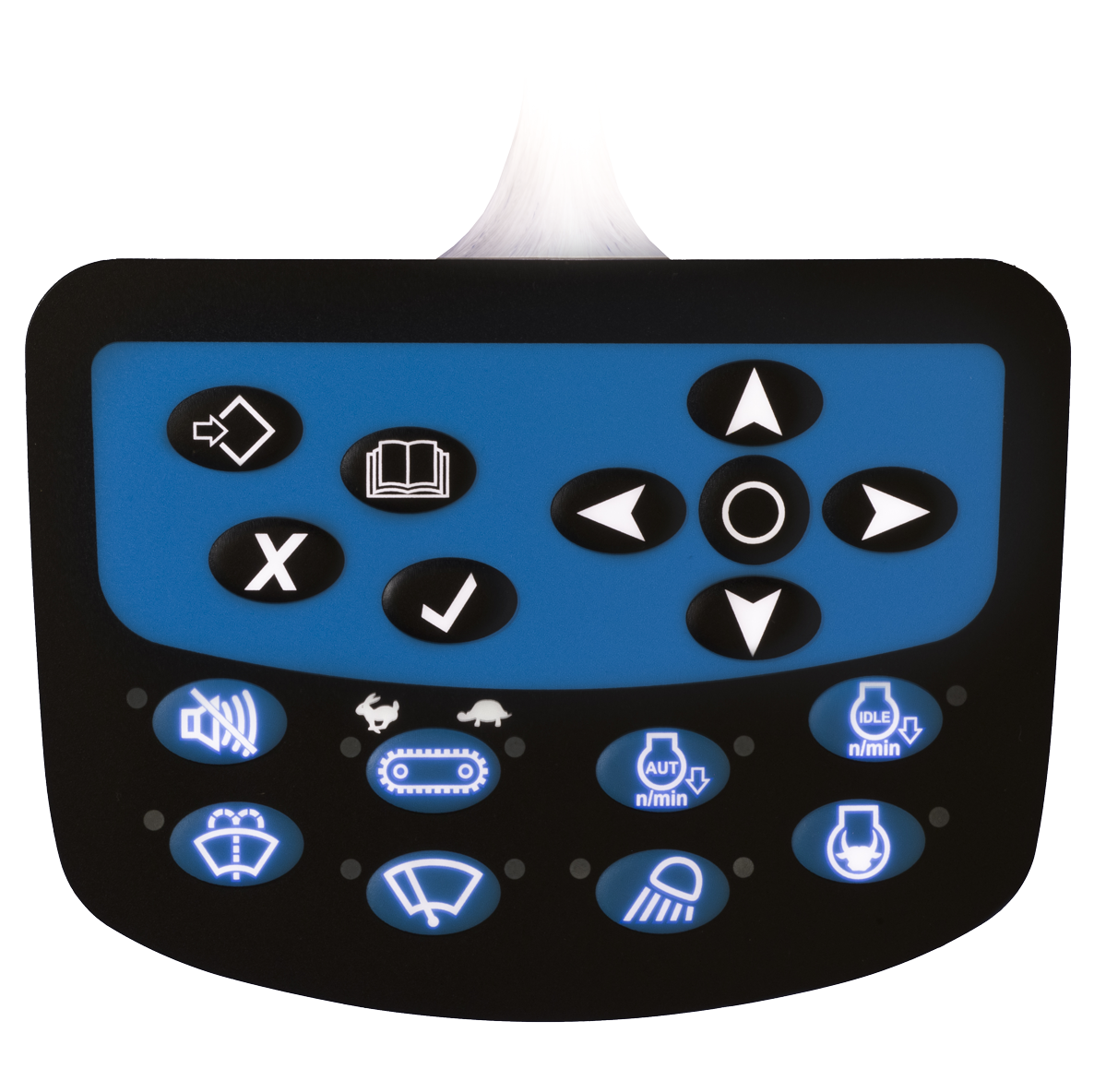Exploring the Different Types and Features of a Membrane Switch
Exploring the Different Types and Features of a Membrane Switch
Blog Article
The Advantages of Utilizing Membrane Layer Switches Over in Customer Electronics
Membrane layer switches are significantly identified for their considerable benefits in customer electronic devices, especially in improving customer interaction and improving production processes. Their capability to give user-friendly interfaces and responsive comments can significantly decrease individual mistakes, while their lightweight building and simplified production actions add to cost-effectiveness and quicker market access. Additionally, the versatility in design enables for customized services that fulfill diverse consumer demands. The implications of these advantages extend past simple capability, hinting at a transformative possibility for the future of electronic devices. What more advantages might emerge as this technology advances?
Boosted Customer Experience
In today's affordable landscape of customer electronics, enhanced individual experience is paramount; nearly 85% of customers focus on intuitive interfaces. Membrane switches play an important function in attaining this degree of usability.
The tactile comments offered by membrane layer switches is vital for directing user activities, making sure that commands are registered properly. This responses system increases and minimizes mistakes individual fulfillment, promoting a positive relationship in between the device and the customer. Furthermore, the personalized nature of membrane switches permits makers to tailor interfaces to specific individual needs, making tools much more accessible and welcoming.
In addition, membrane buttons can incorporate backlighting and visuals overlays, even more boosting visibility and functionality in varied environments. This versatility makes certain that devices stay easy to use and practical, no matter of the setup. On the whole, the combination of membrane layer changes into customer electronic devices substantially enhances individual experience, driving brand loyalty and fulfillment in a significantly competitive market.
Cost-efficient Production
Customer electronics producers are constantly seeking ways to balance high quality with cost, and membrane switches supply an engaging remedy for cost-effective production. membrane switch. These components are inherently simpler than conventional mechanical switches, which reduces both production costs and complexity. The lightweight design of membrane layer changes enables lower delivery expenses and easier assimilation right into compact devices, further improving their appeal in a competitive market

Makers can produce membrane layer switches in high volumes, taking benefit of economies of range. This mass manufacturing ability guarantees consistent top quality while dramatically decreasing per-unit expenses. Additionally, the materials made use of in membrane switches, such as polyester and polycarbonate, are commonly cheaper than those needed for standard switch technologies, adding to general cost savings.
The production procedure for membrane layer changes generally needs fewer actions and less labor compared to other button kinds. This streamlined strategy not just minimizes labor prices yet also increases time-to-market, enabling business to respond swiftly to consumer demand. Consequently, the combination of lowered product expenditures and reliable manufacturing procedures placements membrane layer changes as a wise financial investment for makers aiming to deliver high-grade customer electronic devices at affordable rate factors.
Style Flexibility and Modification
While standard mechanical switches usually enforce limitations on style as a result of their mass and needed mounting systems, membrane switches offer exceptional versatility and customization choices for customer electronics. This innovative technology allows developers to create sleek, low-profile user interfaces that can perfectly integrate into various product visual appeals, from mobile phones to kitchen area devices.
Membrane layer buttons can be generated in practically any type of shape or size, allowing makers to tailor the design to details ergonomic and functional demands. This versatility not just enhances user experience yet likewise enables creative designs that line up with brand name identity. The use of printed graphics on membrane layer switches uses the opportunity for elaborate styles and dynamic colors, which can be easily changed without considerable price implications.
Additionally, membrane layer switches can integrate numerous functionalities into a single layer, lowering the demand for numerous elements and simplifying assembly processes. This structured design approach lessens area and weight, making it excellent for portable consumer electronics. Overall, the design versatility and personalization abilities of membrane switches over empower makers to innovate, eventually leading to more interesting and easy to use items.
Longevity and Integrity
As modern technology continues to develop, the resilience and integrity of membrane buttons have come to be critical considerations for makers in the consumer electronic devices market. Membrane layer buttons are created to hold up against extreme ecological problems, including temperature variations, wetness, and dust exposure. Their durable building and construction often includes multi-layered materials that give an efficient barrier against contaminants, ensuring long life and constant efficiency.
Along with environmental resistance, membrane layer switches offer superior mechanical dependability. Unlike standard mechanical buttons, which might wear over time, membrane switches over utilize a sealed layout that minimizes the threat of mechanical failure. The lack of relocating components not only boosts their life expectancy yet also minimizes damage, making them optimal for high-usage applications.
In addition, membrane layer switches can withstand a significant variety of actuations without loss of functionality, commonly exceeding countless cycles (membrane switch). This longevity equates to decrease replacement costs and lowered downtime for customers and manufacturers alike. Overall, the combination of environmental strength and mechanical integrity makes membrane layer changes a critical choice for consumer electronic devices, making certain that tools continue to be reliable and operational throughout their desired lifespan

Streamlined Product Growth
The toughness and reliability of membrane layer switches over considerably add to streamlined item growth in the customer electronics market. By incorporating these switches early in the style process, manufacturers can decrease the intricacy and number of elements required in their items. Membrane buttons are light-weight and portable, permitting much more efficient area use within tools, which can cause streamlined assembly processes.

The simplicity of manufacturing membrane buttons likewise plays a critical duty in item development. more With modern printing methods and materials, production can be scaled efficiently, decreasing lead times and reducing waste. This results in lower manufacturing expenses, boosting general profitability.

Conclusion
In read more conclusion, membrane switches significantly enhance consumer electronic devices by giving a boosted customer experience, economical manufacturing processes, and functional layout alternatives. The assimilation of membrane layer changes stands for a strategic selection for manufacturers seeking to optimize product style and efficiency.
Membrane buttons are progressively acknowledged for their considerable benefits in consumer electronics, specifically in improving user interaction and enhancing manufacturing procedures. In addition, the materials used in membrane switches, such as polyester and polycarbonate, are typically much less pricey than those required for standard switch innovations, adding to overall cost savings.
The production procedure for membrane switches generally calls for less steps and less labor compared to various other switch kinds. Unlike traditional mechanical switches, which might wear out over time, membrane layer switches utilize a sealed layout that minimizes the risk of mechanical failure.In conclusion, membrane changes significantly improve consumer electronics by giving an enhanced find more individual experience, affordable manufacturing procedures, and flexible design choices.
Report this page